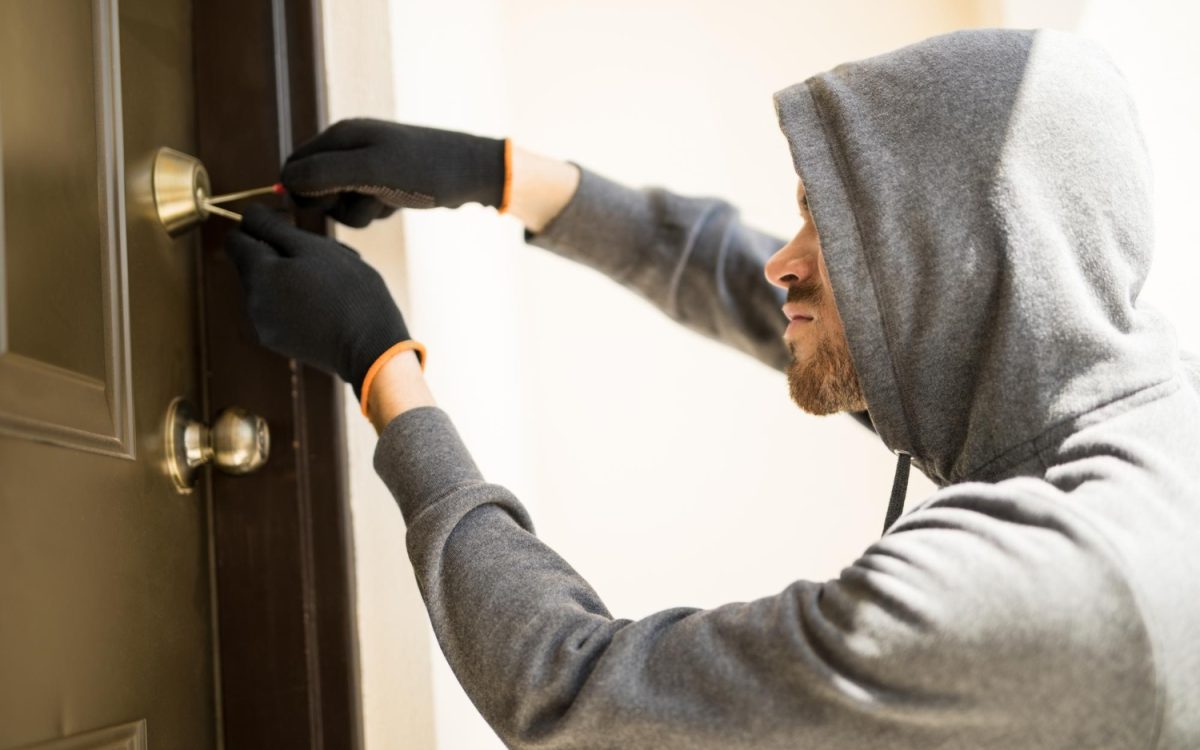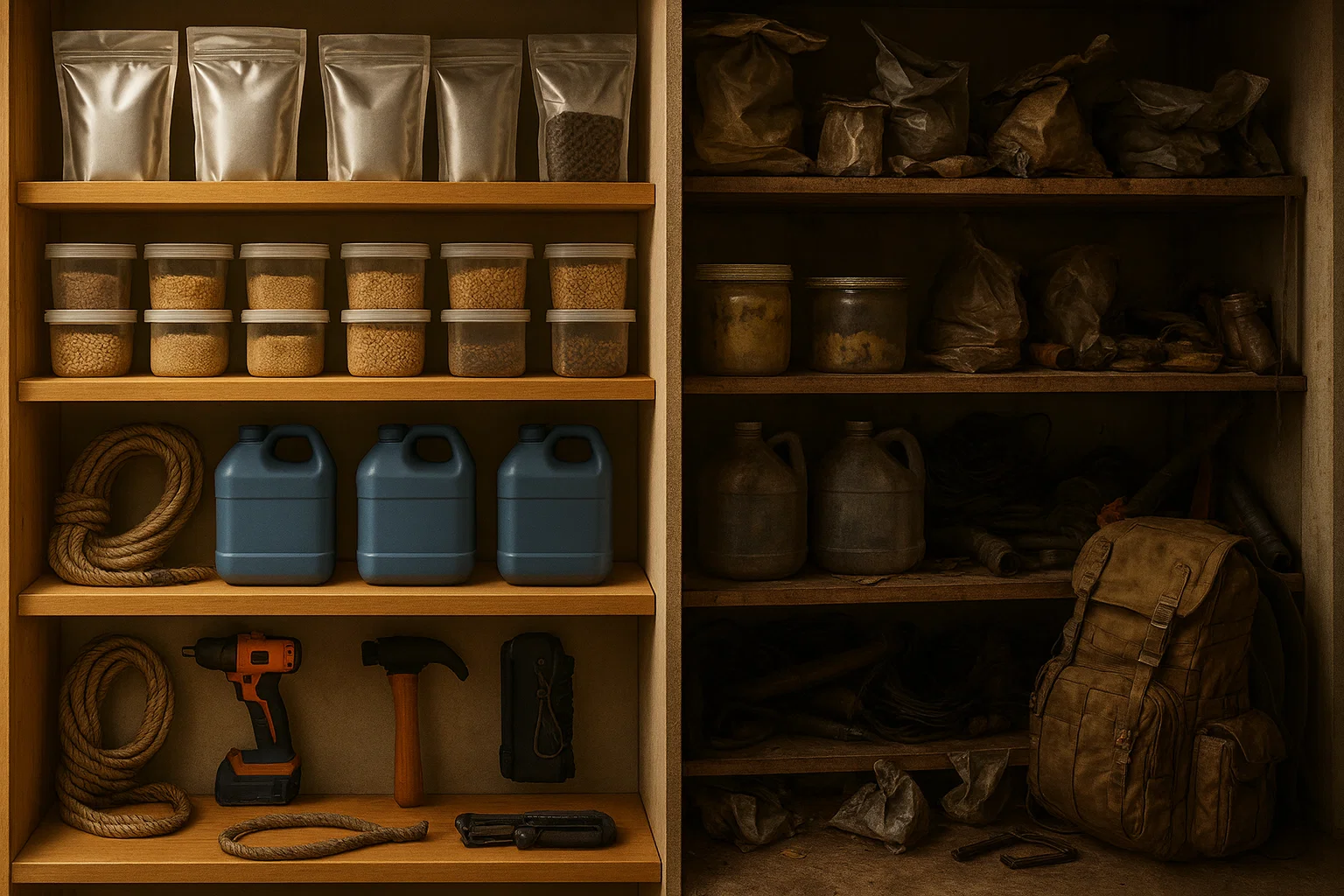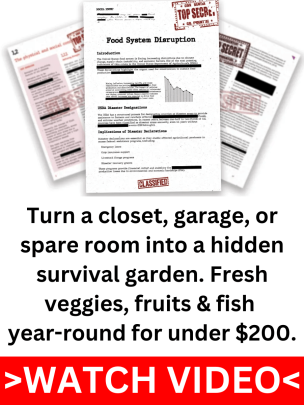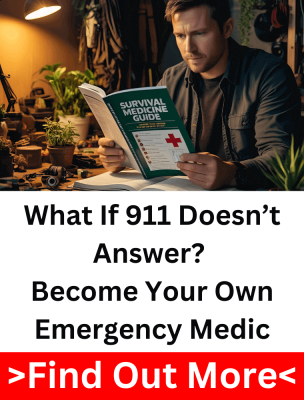When disaster strikes, whether it’s a hurricane, economic meltdown, or civil unrest, looting is almost inevitable. Some looters are desperate, others are just criminals, but either way, they’re coming. For those of us who’ve spent time prepping, this is when all that effort gets tested. The question is: how do you protect what you’ve worked so hard to secure?
Looters prey on weakness, usually right after a storm or during riots when law enforcement is thin. We’ve all seen it, stores ransacked, homes destroyed. Those who didn’t prepare will look for those who did. Your goal: don’t be an easy target.

Keeping looters out is more than having strong locks or a gun. It’s about setting up your home, so looters think, “This place isn’t worth it.” You need layers of protection, visible and hidden. Sometimes, you’ll want to show strength, other times, you’ll want to fly under the radar. Looters act on opportunity, so the more obstacles you create, the safer you’ll be.
Physical defenses are key, but staying calm, working with neighbors, and knowing what to do when looters show up are just as important. In the next sections, we’ll cover securing your home, protecting supplies, and developing the right mindset for survival.
Looters and Their Tactics
Looters come in different forms, and understanding their motivations is crucial to protecting your home and supplies. Opportunists are the first to appear, people acting on impulse during the chaos of a disaster. They aren’t hardened criminals, but they’ll take advantage of easy targets. Homes that look abandoned or unsecured will attract them, and they’ll strike where it takes little effort to get in. On the other hand, desperate survivors are those who didn’t prep and are now scrambling for essentials like food and water. They might be neighbors or people from nearby towns who never planned for a disaster, and while they aren’t usually intent on robbery, their desperation can make them unpredictable and dangerous.
The most significant threat comes from organized looters. These groups operate with a plan, often working in teams and scouting out homes or buildings that seem well-stocked. They’re calculating and willing to use violence if necessary. Unlike opportunists, they’ll observe an area first, watch residents’ behavior, and wait for the right moment to strike. Once they know where valuable supplies are, they may come back repeatedly until they get what they want. As the disaster drags on and resources become scarcer, these organized gangs become more of a threat, making it essential to stay vigilant and adapt your defenses.
Defending against looters requires more than just physical barriers. You need to make your home appear like it’s not worth the trouble, either by reinforcing doors and windows or by having visible security measures like cameras or guard dogs. If a looter thinks getting into your home is too risky, they’re likely to move on to easier targets. But beyond physical protection, mental preparedness is key. Have a plan for how you’ll respond if looters show up, and make sure your family is ready for any scenario. Staying calm and knowing how to react can be the difference between staying safe and falling victim.
When to Show Strength and When to Stay “Gray”
Sometimes it’s better to show that you’re prepared and armed, and other times blending in is more effective. If looters think your house is too difficult to attack, they might move on. Visible deterrents like firearms, guard dogs, and security signs can help project strength. However, if things are still developing, the “gray man” approach-where you appear as unprepared as everyone else-can help you avoid being targeted in the first place.
Fortify your home
Your home must be your fortress in a crisis, and the first step is reinforcing entry points. Upgrade door locks with heavy-duty deadbolts, replace weak doors with reinforced steel or solid wood, and reinforce hinges with long screws. Adding a security bar across doors can be a simple but effective way to stop most looters. Windows are another vulnerability, install security bars or apply security window film to make the glass harder to break, and consider shutters or boards that can be quickly put up. Even simple measures like placing thorny bushes or heavy planters in front of windows can make access more difficult. Outside, a tall, sturdy fence can act as a strong barrier, and planting thorny bushes around it adds extra protection. Motion-sensor lights also help by illuminating potential intruders after dark. If you can’t afford a full security system, fake security cameras and warning signs can still deter looters.
Inside, it’s important to keep a low profile and avoid leaving valuables in plain sight. Set up defensible positions in your main living areas to prepare for a break-in, and use a layered defense strategy. If looters breach one layer, they should face another challenge, such as locked interior doors or additional barriers. Visible signs like “Beware of Dog” or security system signs can also make looters second-guess targeting your home. By combining these visible and hidden measures, you make it much more likely that looters will pass by in search of easier targets.
Arming Yourself for defense
Firearms can be an important part of home defense, but choosing the right one depends on your experience and specific needs. A 12-gauge shotgun, like the Remington 870 or Mossberg 500, is a popular option due to its ability to fire a spread of pellets, increasing the likelihood of hitting a target in stressful situations. The sound of racking a pump-action shotgun can also serve as a deterrent.
For those who prefer something smaller, a handgun such as the Glock 19 or Smith & Wesson M&P Shield (both 9mm) is highly portable and reliable, allowing easy movement throughout the home. If you’re comfortable with rifles, a semi-automatic rifle like the AR-15 offers accuracy and stopping power, though overpenetration in urban settings should be considered.
Non-lethal options like tasers, pepper spray, or bean bag rounds offer alternatives, but require closer proximity and may not be as effective against armed intruders. Whichever weapon you choose, regular practice is essential to ensure you can use it confidently under stress. Always be aware of local laws regarding self-defense to avoid legal issues. Ultimately, the best weapon is the one you’re most comfortable handling responsibly.
Avoid Looting Hotspots
Looters often target specific places first, such as grocery stores, pharmacies, and gas stations. These are chaotic and dangerous during the early stages of a disaster. If you’ve prepared properly, you’ll have no need to venture out for supplies. Stay clear of these areas, and if necessary, have a bug-out location ready as a fallback.
The Power of Community Defense
You’re much stronger when you work together with others. In any disaster scenario, building a community defense network with your neighbors is a powerful deterrent to looters. Organize patrols, share resources, and establish communication methods like radios or walkie-talkies. A neighborhood that sticks together is much harder to infiltrate than a lone home.






















1 Comment